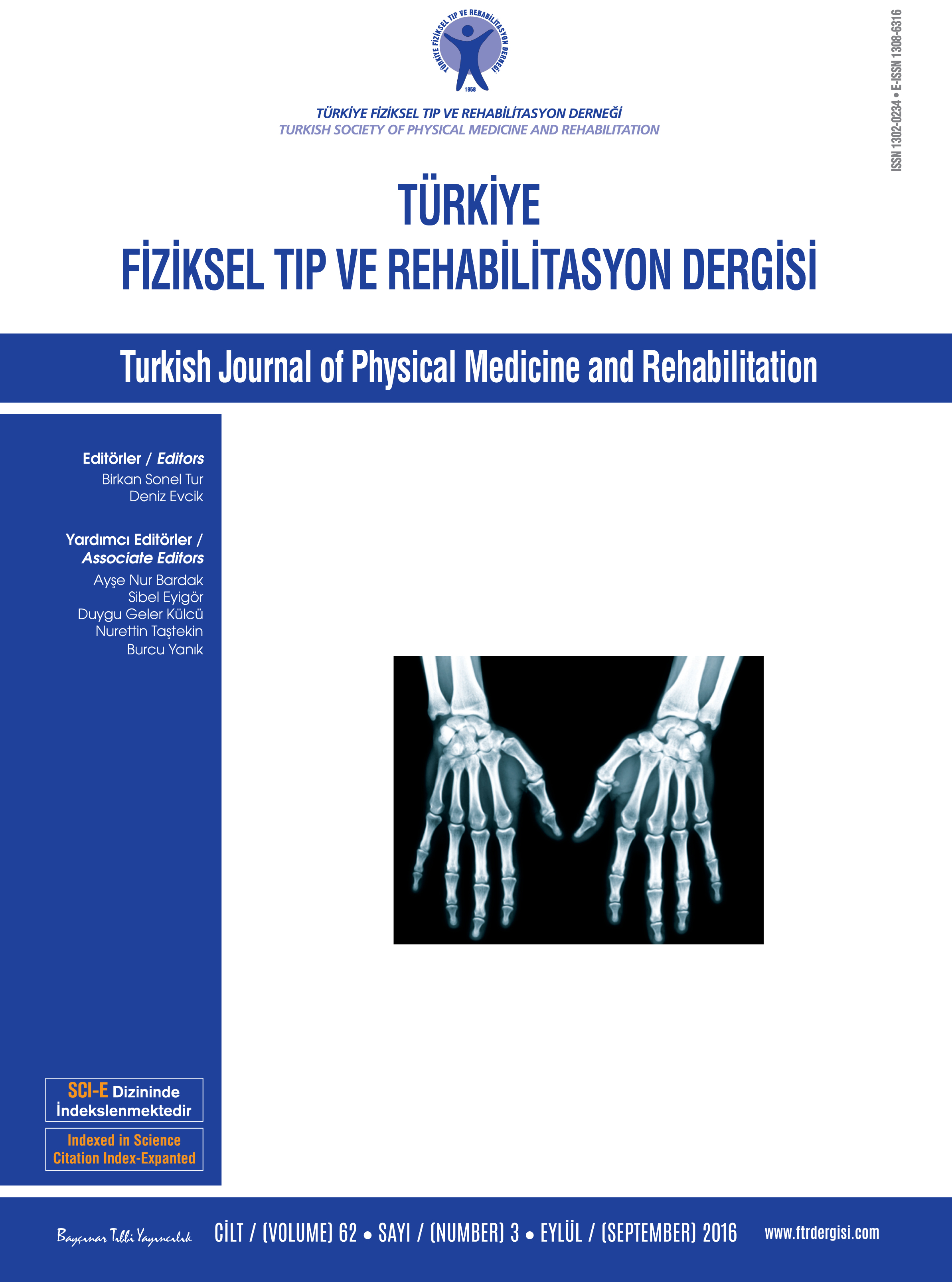The influence of social and demographic features on functional level and quality of life after total knee arthroplasty
2 Department of Orthopedics and Traumatology, Aksaray State Hospital, Aksaray, Turkey DOI : 10.5606/tftrd.2016.73669 Objectives: This study aims to evaluate the influence of selected demographic, clinical and social features of patients diagnosed with primer knee osteoarthritis on the improvements increase in functional level and quality of life after total knee arthroplasty (TKA).
Patients and methods: Between January 2014 and August 2014, a total of 70 patients (17 males, 53 females; mean age 67.3±8 years; range 47 to 91 years) with unilateral primary knee osteoarthritis were included in this prospective study. Anteroposterior knee X-rays were graded according to the Kellgren-Lawrence system. Functional level was assessed using the Knee Injury and Osteoarthritis Outcome Score (KOOS-PS) and quality of life was evaluated using the Short Form 36 pre- and six months postoperatively.
Results: There were significant improvements in the functional level (p<0.0001) and quality of life (p<0.0001) of the patients in the sixth postoperative month. While patients with a higher radiological score and a higher education level demonstrated higher functional improvement rates, a significant increase was observed in the quality of life of these patients as well as of the patients with a lower body mass index (BMI) and fewer comorbidities. Age, gender, place of residence (rural or urban) and employment status did not influence the improvement rates of either functional level or of quality of life.
Conclusion: Patients with a higher radiological score and a higher education level show more significant improvement rates in both functional level and quality of life. Although lower BMI and fewer comorbidities do not have an influence on the rates of improvement in functional level, they have a positive impact on the rates of quality of life. The clinical relevance of this study is that same features do not influence the improvement rates in functional level and quality of life after TKA, and therefore physicians should consider the demographic, clinical and social features of the patients individually when they recommend TKA.
Keywords : Arthroplasty; demographics; knee osteoarthritis; short form 36; social
















